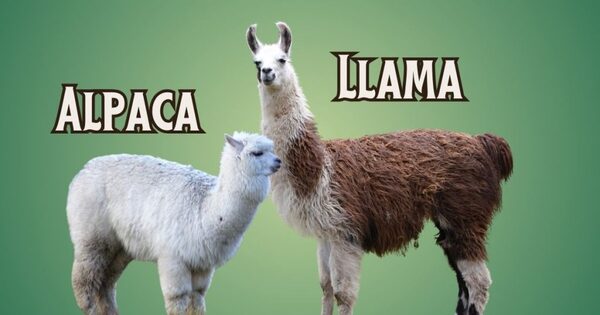If you’ve ever seen a llama or an alpaca, you might wonder: are these two animals the same? They share similar features and are often confused, but they are distinct animals with unique characteristics. Let’s explore the differences and similarities between llamas and alpacas to clarify this common misconception.

Llamas and alpacas are both members of the camelid family, which also includes camels and guanacos. They are native to South America, particularly in countries like Peru, Bolivia, and Ecuador. While they look somewhat alike, there are key differences between the two.
Size: Llamas are generally larger than alpacas. They can weigh between 250 to 450 pounds and stand about 5.5 to 6 feet tall at the top of their heads.
Fleece: Llama fleece is coarser and thicker than alpaca fleece. It is often used for making rugs and ropes.
Purpose: Historically, llamas were bred as pack animals. They are strong and can carry heavy loads, making them useful for transportation in mountainous regions.
Temperament: Llamas are known for their independent nature. They can be more assertive and may spit when they feel threatened or annoyed.
Size: Alpacas are smaller, typically weighing between 100 to 200 pounds and standing about 3 to 4 feet tall at the top of their heads.
Fleece: Alpaca fleece is softer and finer compared to llama fleece. It is highly valued in the textile industry for making clothing, blankets, and accessories.
Purpose: Alpacas are primarily bred for their luxurious fleece. They are not typically used as pack animals.
Temperament: Alpacas are generally more docile and social than llamas. They tend to stay in herds and are less likely to spit.
Physical Appearance: Llamas have longer faces and larger ears compared to the shorter, more rounded faces and smaller ears of alpacas. The fleece of alpacas is also denser and comes in a wider variety of colors.
Use: Llamas are used for packing and guarding livestock, while alpacas are primarily bred for their wool.
Behavior: Llamas are more independent and can be more challenging to train, whereas alpacas are generally easier to manage and more social.
Genetics: Both animals share similar genetic backgrounds and are closely related. They can interbreed, but the offspring (called a huarizo) typically have characteristics of both parents.
Diet: Llamas and alpacas are herbivores, primarily eating grass, hay, and other plant materials.
Habitat: Both thrive in similar environments, typically high altitudes in the Andes mountains.

Llamas and alpacas are often confused due to their similar appearances, but they are distinct animals with unique characteristics. This comparison will help clarify their differences and similarities.
| Feature | Llama | Alpaca |
|---|---|---|
| Size | Larger; weighs 250-450 lbs, 5.5-6 ft tall | Smaller; weighs 100-200 lbs, 3-4 ft tall |
| Fleece | Coarser and thicker | Softer and finer |
| Primary Use | Pack animals; used for carrying loads | Primarily bred for wool |
| Temperament | More independent and assertive | Generally more docile and social |
| Facial Features | Longer face, larger ears | Shorter, rounded face, smaller ears |
| Color Variety | Typically fewer color variations | Wide range of colors available |
| Behavior | Can spit when threatened or annoyed | Less likely to spit; tends to stay in herds |
| Historical Role | Used by indigenous peoples for transport | Valued for their fleece |
| Lifespan | 15-25 years | 15-20 years |
In summary, while llamas and alpacas are related and share some similarities, they are not the same animal. Llamas are larger, have coarser fleece, and are used primarily as pack animals. Alpacas are smaller, have finer fleece, and are primarily bred for their wool. Understanding these differences can enhance your appreciation for these fascinating animals and their unique roles in South American culture.
Whether you’re considering adopting one or simply interested in learning more, knowing the distinctions between llamas and alpacas will help you understand their importance and value in the animal world.
We created this article in conjunction with AI technology, then made sure it was fact-checked and edited by a Animals Top editor.